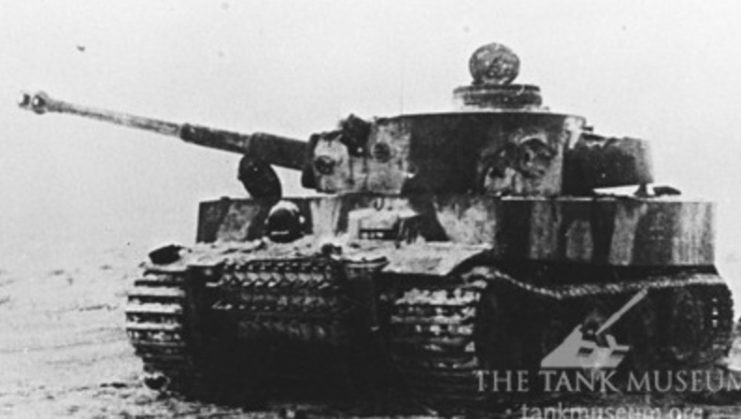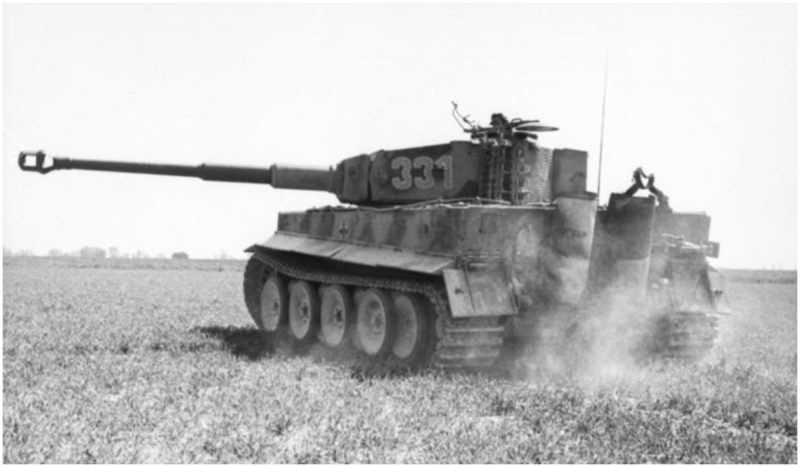The Tiger I began to enter service with the German Army in mid-1942. They were to be used by Heavy Tank Battalions, a new type of unit. The first two were formed in May 1942 at Fallingbostel.
The Heavy Tank Battalions
The first unit to receive the new tank was Heavy Tank Battalion 502. Although the unit existed, the tanks didn’t. Production had fallen behind schedule and by the end of August just nine Tigers had been accepted by the Army. The 502nd received their first four Tigers on the 19th and 20th August, allowing the Battalion’s 1st Company to be formed.
As brand new vehicles, the Tigers suffered from mechanical teething troubles that led to frequent technical failures and breakdowns. The Battalion relied heavily on support from employees of Henschel, who had built the tank, and Maybach, responsible for the engine.
At this early stage, most Tiger crewmen were drawn from existing Panzer units. This meant they were well trained and experienced, but they were new to the different tactics to be used by the Heavy Tank Battalions. Unfortunately so few Tigers had been completed that by necessity training using the actual vehicle was minimal.
Hitler had ordered that the Tiger should be used in combat as soon as possible, so despite these issues, the Company entrained for the Eastern Front on the 23rd. At full strength, it would have had nine Tigers and ten Panzer IIIs, but it appears that just four of each were sent.

Tiger combat debut
The Company arrived at Mga, south-east of Leningrad, on the 29th August, detrained and began to move towards the front. That day saw the Tiger combat debut. It was an inauspicious start to what has become the most infamous tank in history.
The commander of the 502nd, Major Richard Märker, had advised against deploying the Tigers. He argued that the terrain in this sector was completely unsuitable for the 56 ton tank. Heavily forested, the area had poor drainage, which resulted in large, soft bogs. The heavy rains common at this time of year made matters worse.

He was also worried that just 4 tanks would have minimal impact on any battle. He was overruled and the tank’s debut proved to be a failure. On two of the tanks thick mud built up between the interleaved roadwheels. This overstressed the power train and caused transmission failure. A third suffered engine failure.
The three broken down and bogged in Tigers were recovered by the Company’s Sd Kfz 9 Famo halftracks. Three of these vehicles were required to haul each tank to safety. The replacement parts had to be flown in from Germany. Despite these challenges, the four Tigers were operational again by the 15th September.

The second use of the Tiger, on the 22nd September, was even less successful. All four broke down or bogged in, with one catching fire. This time only three could be recovered. Märker suggested destroying the fourth to prevent the Soviets learning its secrets, but he was overruled by the Army Command. After several months approval was given and the tank was blown up on the 25th November.
By this time Märker had been removed from command of the 502nd. In spite of his warnings, he was held responsible for his unit’s failures. However, since the order to use the Tigers had come directly from Hitler, there was no avoiding it.
A message from The Tank Museum:
“Please Support Us: As a charity, we rely on public support for all our activities. Our work is funded entirely by people like you. With your support, we can continue to create content. With the right support we might be able to do it more regularly – and can be even more ambitious. Please Click on the Banner Below.”
Thanks to the Tank Museum for this Blog, which originally appeared here.

